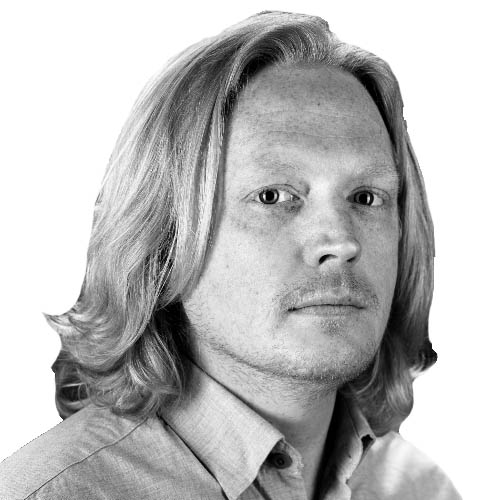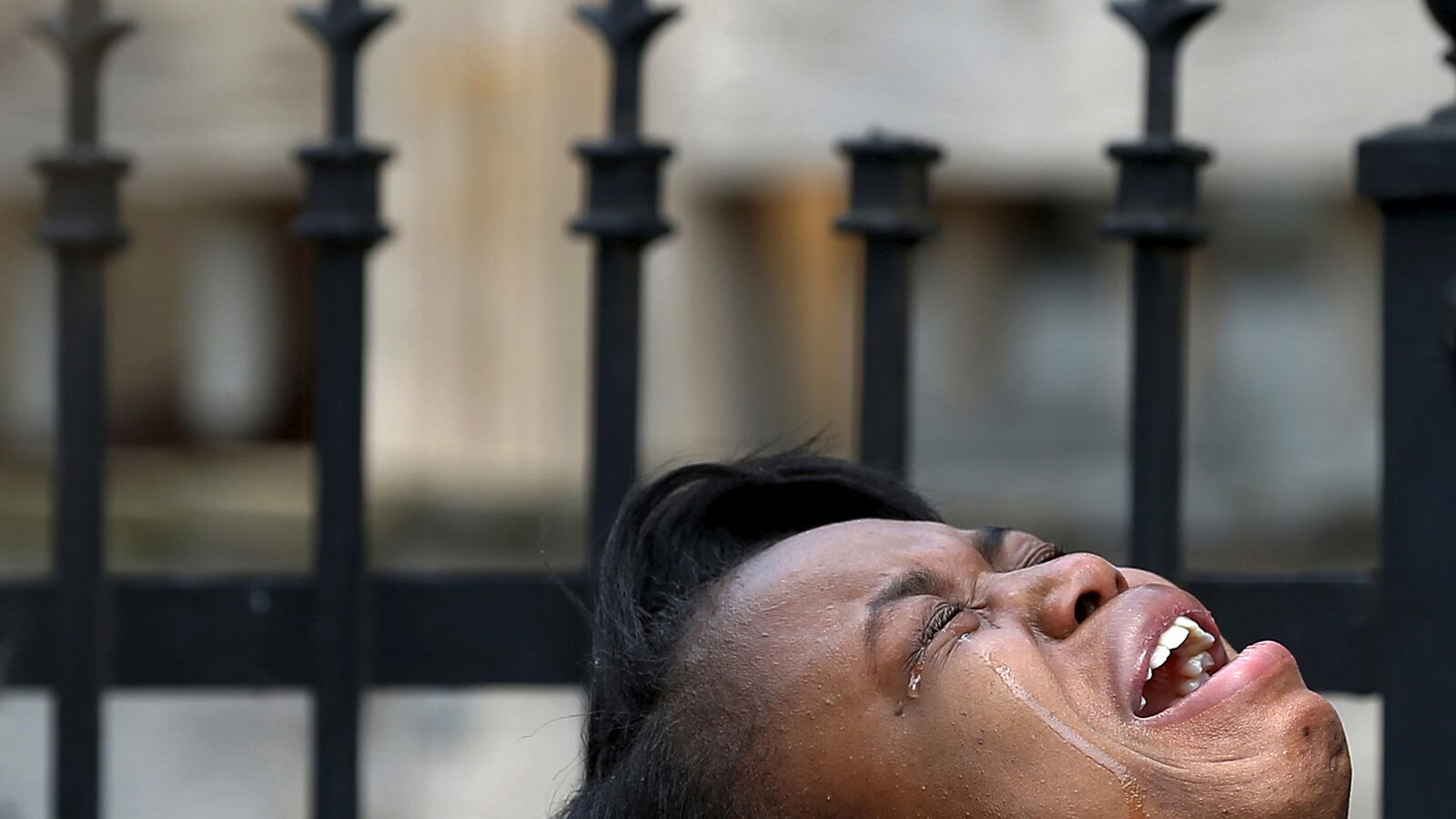CHICAGO — Four men and two women were shot on April 5 last year, then five weeks later a 15-year-old boy and two men were shot.
Another 15-year-old boy and two men were shot in July. Three men were shot on August 21. Three men and a 73-year-old woman were shot in September. Again in September, two boys ages 12 and 16 were shot along with an 18-year-old man. Two women and one man were shot on that same block on Nov. 19.
These mass shootings didn’t happen in Roseburg, Lafayette, Charleston, or Chattanooga but in Chicago’s worst neighborhoods, where—by one measure—it is more dangerous to live than the world’s most-murderous countries.
West Garfield Park, population 18,000, had 21 murders last year, which makes for a homicide rate of 116 per 100,000 people. The world’s leader in murders, Honduras, has a homicide rate of 90, according to the United Nations.
Following West Garfield Park in lethality was West Englewood and its 73.3 murder rate, more than second-place Venezuela with its 53.7 rate. Chicago’s Chatham (58) beats Belize (44.7); Englewood (52.6) outdoes El Salvador (41.2); South Chicago (48) tops Guatemala (39.9). The United States as a whole has 4.5 murders per 100,000.


Chicago’s 411 homicides don’t look like a lot compared the city’s 2.7 million residents, but that’s the misleading part of this grim numbers game: Determining a city’s level of violence by looking at its overall per capita rate doesn’t tell you shit if you don’t examine numbers in the hood.
And West Garfield Park is certainly that. The neighborhood has an average annual income of just more than $10,000; 40 percent of households live below the poverty line. West Garfield Park ranks near the top of Chicago’s 77 neighborhoods on the city’s “hardship index,” which is calculated by taking into account those living in crowded housing, and unemployment rates among teens and adults, among other factors. The higher the number, the more difficult life will be, according to the statisticians. West Garfield Park and its 96 percent black residents scores 92 on the hardship index.
Many of those killed last year in West Garfield Park were men in their twenties. But there were others whose deaths are perhaps less dismissable. Shamiya Adams, an 11-year-old killed by a bullet to the head as she sat in a friends bedroom making s’mores, could be one. Or 21-year-old Shambreyh Barfield, killed by gunfire intended for someone else as she sat on her front porch with a friend, might be one to pick out as a particularly tragic death.
And for every person killed by gunfire in Chicago, another four are shot and survive. Last year the city had more than 2,000 shootings and has surpassed that total in 2015. West Garfield Park’s per capita shooting rate was a staggering 411 per 100,000 people, followed closely behind by West Englewood’s 391.5.
The media and politicians don’t really care about that though. The new “epidemic” is mass shootings, they say, just a few months removed from the previous epidemic of police killings. Those clamoring for change in the wake of another unexpected gun massacre are right: Mass shootings are a problem—in Chicago. The city saw 107 mass shootings last year, defined as having three or more victims. As of July 25 of this year, there have been 192 mass shootings, according to the Chicago Tribune.
When a crazed gunman shoots up innocents on a tree-lined campus in a sleepy Oregon town, calls to action are loud and forceful. But when six people are shot in the 4300 block of West Wilcox in Chicago—as they were last year—there is silence.
It can be hard for readers to keep up—let alone for people to contemplate—the daily massacres on Chicago’s streets. Just last week, a grandmother, her pregnant daughter, and the woman’s 11-month-old son were shot in a drive-by in Chicago’s Back of the Yards neighborhood. The child lived; his mother and grandmother did not.
“You would think that the attention would be tremendous, but it really wasn’t,” Pastor Corey Brooks said. While he was surprised to hear that some Chicago neighborhoods near his own trumped per capita murder rates of violent South American countries, Brooks wasn’t that surprised.
“We keep telling people about the magnitude and seriousness of the issue, but we’re obviously not getting people to hear the message,” the anti-violence pastor and rare black Republican said. “I think what’s going on is it’s expected, that people think it’s a way of life on the South Side of Chicago. And people have been desensitized.”
With 6,000 shootings since 2012, perhaps that’s to be expected.
***
It should be obvious why there are so many shootings in Chicago: guns.
An illegal gun is recovered every 75 minutes by Chicago police, they say. Mississippi sent 4,000 illegal guns to Chicago in the last decade. Nineteen percent of guns seized by police between 2009 and 2013 came from Indiana, which does not require background checks for firearm purchases online or at gun shows. Straw purchasers buy up the guns, take a short drive over the state line, and sell them on the streets.

The city may have strict gun laws—less strict than gun nuts would claim—but they’re doing next to nothing to stem the tide of illegal guns from states with weak gun laws.
The Chicago Police Department does not break down homicides and shootings by neighborhood. Instead, The Daily Beast compiled the figures on West Garfield Park and West Englewood based on publicly available data and the help of a private, anonymous citizen who runs a Chicago crime website.
Furthermore, there is no way to compare the neighborhood shooting rates to those at the national level, because there is no national shooting data. The best the feds can do to keep up with the hail of bullets is to estimate how many people get shot based on how many are admitted to the hospital each year with non-fatal gunshot wounds, which can be from suicides, accidents, or attempted homicides.
An uptick in shootings and homicides this year is one of the reasons the Chicago City Council’s Black Caucus called for Superintendent Garry McCarthy’s head on Monday.
Lorenzo Davis, a former Chicago police commander who went on to blow the whistle against his former department over whitewashed police shootings, is quick to criticize McCarthy and the force.
Guns are a massive problem, Davis said, but so is the lack of black cops and officials in the department, which doesn’t help relations with the community. Complacency among police and prosecutors, reduced manpower, unwillingness on the part of victims and witnesses to identify suspects—all lead to a street culture that often results in killers going free.
“When I was a police commander there were a handful of guys who killed five or six people,” Davis said. “They would kill someone, then they would kill the witnesses.”
Jedidiah Brown, a pastor who works to mediate conflicts between gang members and others who often look to settle scores with shots fired, said guns are part of broader issues within street culture.
“We have civilization and we have education, but we also have a Wild West mentality,” said Brown.
Brown isn’t alone. Tio Hardiman, president of the Violence Interrupters, regularly works in West Garfield Park to prevent minor beefs from turning into mass shootings. Hardiman says he has personally saved eight lives in the past few years.
“A lot of people talk a lot of good talk, but the only way to stop the killing is, you have to know the killer,” Hardiman explained. “You have to have a relationship with the killer to stop them at that moment in their life.”
That means having deep roots in the streets. Hardiman doesn’t work with police, who distrusted by many in West Garfield Park and other majority black neighborhoods.
“Our job is to prevent retaliation and stop it on the front end,” he said. Hardiman’s corps include some men in their twenties, others nearing 60.
Too much contact with the police and “they’d lose their street credibility,” he said.
“We cannot be satisfied with people’s lives being taken prematurely, especially when you’re dealing with a lot of children,” said Brooks, the South Side pastor, and drove home the point: “These are children that are killing one another.”
Street connections are key to resolving disputes and preventing more deaths and shootings—a never-ending job in West Garfield Park and elsewhere. That’s because the nature of gun violence has changed drastically since the crack-fueled gang turf wars of the late ’80s and early ’90s.
Even in those violent years, when annual homicides approached and passed 1,000, there was a sense of order, Askari Ali said. Hierarchical gang structures provided guidance—and rules.
Now, chaos reigns.
“Back in the day, what you did, it was accounted for,” said Ali, a community organizer who was born and raised in Chicago’s violent Austin neighborhood. “If we used to see on the news that you shot a pregnant woman or a kid back in those days, a gang would come and get you.”
A self-described black nationalist, Ali works from the street level up—eschewing affiliation with groups like the Nation of Islam and others who attach a religious or political agenda to anti-violence efforts.
The more-structured gang culture of the ’80s and ’90s “would make a young person more conscious of what they were doing,” Ali told The Daily Beast. “Now, if you go shoot up a McDonald’s and a child dies, nine times out of 10 people are gonna say, ‘You a savage, you go hard.’”
The impact of so many people being killed along with their counterparts who live through shootings seems impossible to determine.
“You can do the numbers and discover that murder is big business, and that murders are driving up a lot of costs,” said Brooks, the South Side pastor. “But what they’re not paying attention to is the trauma that families are experiencing, that children are experiencing. These children are growing up in war-like conditions.”
The constant violence creates an atmosphere of fear and lack of self-respect; both Ali and Hardiman refer to the phenomenon as “self-hatred.”
“A lot of the young guys will tell you, ‘Well, I don’t like him because he lives on different block,’” said Hardiman. “And when you ask why, the answer is, ‘I just don’t like him.’”
This adds to the chaos, according to Hardiman.
“They’re killing babies, shooting mothers, shooting kids… The mentality is, ‘If I don’t like myself there’s no way I’m gonna like you.’”
Askari Ali puts it more bluntly.
“They don’t appreciate life because they feel like their life not shit,” said the 26-year-old of kids coming up now. “So they got no problem taking your life.”
Both Hardiman and Ali suggested a slew of fixes for the systemic violence plaguing their communities, which neighbor one another on the city’s West Side: jobs programs, community centers, intervention from people who can speak the same language as the 13- and 14-year-olds with no hope and easy access to guns, drugs, and street life.
“A lot of these young people, all they have is their respect. They have nothing else,” said Davis. “And if someone disrespects them, they settle the score with guns.”






